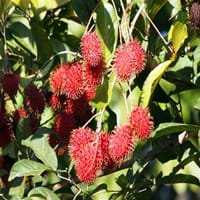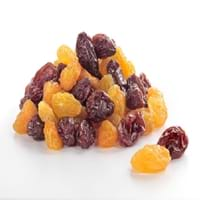Health Benefits
Anti-oxidant properties, Boosts immune system, Skin rejuvenation, Strengthening of bones
Acidity treatment, Cancer prevention, Good for diabetics, Prevents constipation, Prevents Anaemia
General Benefits
Antiseptic properties, Cures headache, Removes waste from kidney
Boosts immune system, Cures fever, Eye care, Fights against infections, Strengthens bones
Skin Benefits
Hydrates skin
Anti-aging benefits, Reduces wrinkles, Skin rejuvenation
Hair Benefits
Good conditioner
Protects hair
Allergy Symptoms
Chest pains, Rhinitis, Wheezing
Anaphylaxis, Asthma, Breathing difficulty, Coughing, Drop in blood pressure, Hives, Skin rash, Stuffy nose, Swelling of mouth, tongue or lips, Wheezing
Side Effects
Unknown
Allergic reaction
Lactating Women
Yes
Not Available
Best Time to Eat
As a snack in the late afternoon, Don't consume at night and before bed, Eat the fresh ones, avoid mixing with any other foods, don't eat after meal., Morning time (before lunch)
Any time except an hour after meal
Vitamin B5 (Pantothenic Acid)
Vitamin C (Ascorbic Acid)
Vitamin K (Phyllochinone)
Phytosterol
Not Available
Calories in Fresh Fruit with Peel
Calories in Fresh Fruit without Peel
Not Available
Not Available
Calories in Frozen Form
Not Available
Calories in Dried Form
Not Available
Calories in Canned Form
Not Available
Calories in Jam
Not Available
Calories in Pie
Not Available
Type
Tree fruit, Tropical
Berry
Season
Early summer, Early winter, Late fall, Late spring
All seasons
Varieties
Rongrien, Chompu, Rapiah, Bingjai and Lebak Bulus
Dark raisins, White or golden raisins, Sultanas and Currants
Seedless Variety
No
Not Available
Color
Coral red, Yellow
Black, Blue, Green, Purple, Yellow
Inside Color
Greyish-white
Brown
Origin
Unknown
Central Europe, Western Asia
Grows on
Trees
Not Available
Soil Type
Clay, Loam
Clay loam, Sandy loam
Climatic Conditions
Humid
Warm
Facts about
- Oils extracted from its seeds is used to make soaps and candles.
- 'Rambut' means hairy in Malay.
- It makes the best hair mask.
- Seeds are edible and healthy too.
- 30th April is known as National Raisin Day.
- Fresno, California is known as raisin capital of the world.
- Half of world's raisin supply is produced in California.
Top Producer
Thailand
United States of America
Other Countries
Africa, India, Indonesia, Malaysia, Philippines, Sri Lanka
Afghanistan, Argentina, Australia, Chile, China, Iran, South Africa, Turkey, Uzbekistan
Top Importer
Singapore
Europe
Top Exporter
Thailand
Turkey
Botanical Name
Nephelium lappaceum
Vitis Vinifera
Synonym
Rambota
Not Available
Subkingdom
Tracheobionta
Tracheobionta
Division
Tracheophyta
Magnoliophyta
Class
Magnoliopsida
Magnoliopsida
Subclass
Rosidae
Not Available
Family
Sapindaceae
Vitaceae
Species
N. lappaceum
Vitis vinifera
Generic Group
Not Available
Grape
Difference Between Rambutan and Raisin
We might think that Rambutan and Raisin are similar with respect to nutritional value and health benefits. But the nutrient content of both fruits is different. Rambutan and Raisin Facts such as their taste, shape, color, and size are also distinct. The difference between Rambutan and Raisin is explained here.
The amount of calories in 100 gm of fresh Rambutan and Raisin with peel is 69.00 kcal and 299.00 kcal and the amount of calories without peel is Not Available and Not Available respectively. Thus, Rambutan and Raisin belong to High Calorie Fruits and High Calorie Fruits category.These fruits might or might not differ with respect to their scientific classification. The order of Rambutan and Raisin is Sapindales and Vitales respectively. Rambutan belongs to Sapindaceae family and Raisin belongs to Vitaceae family. Rambutan belongs to Nephelium genus of N. lappaceum species and Raisin belongs to Vitis genus of Vitis vinifera species. Beings plants, both fruits belong to Plantae Kingdom.









